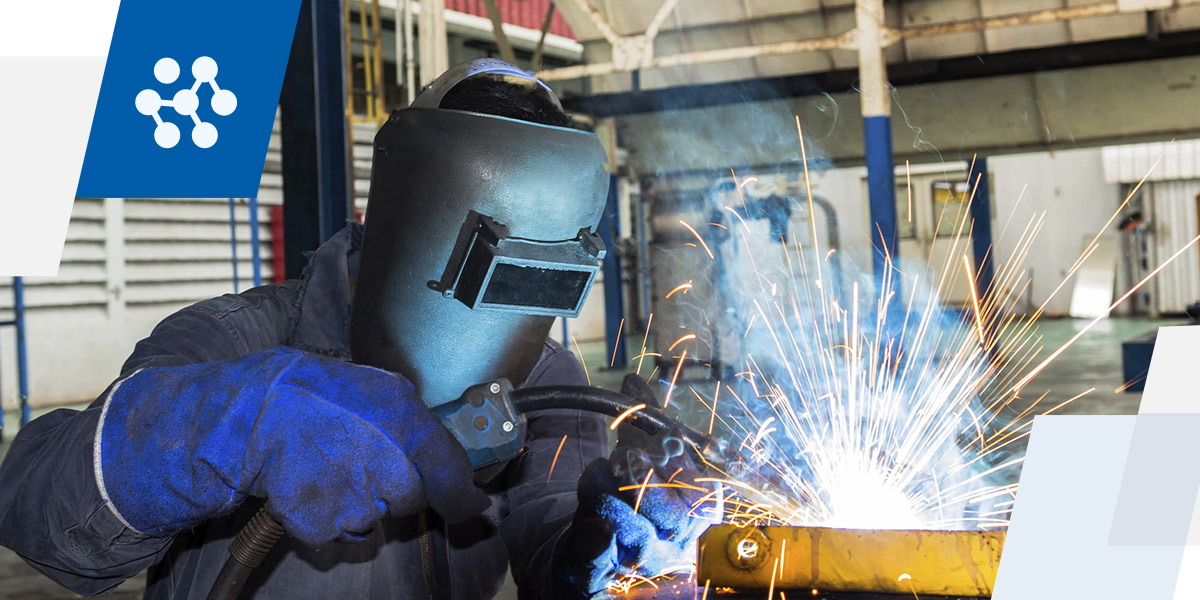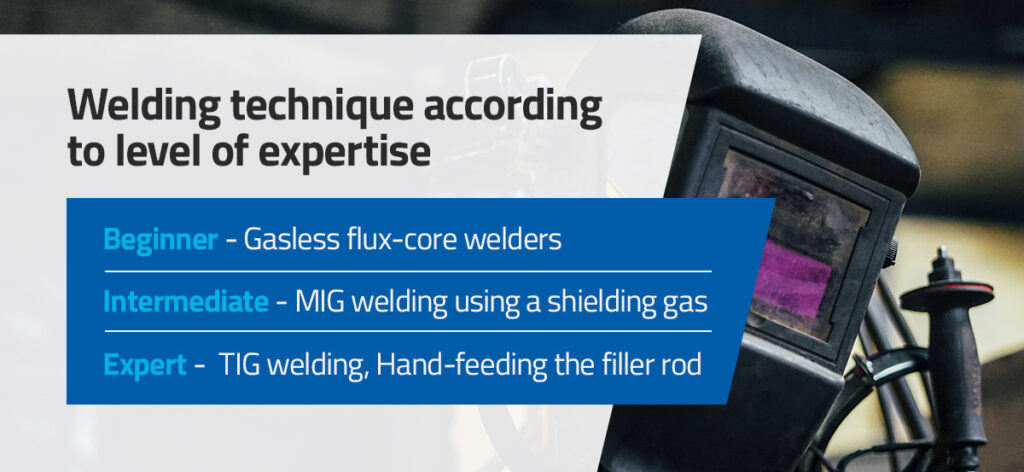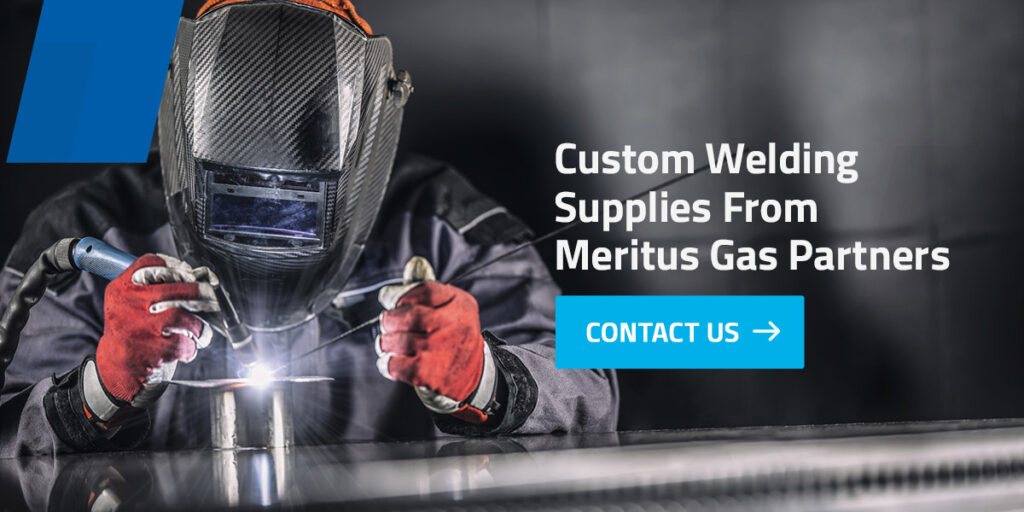

Whether you are a beginner DIY welder or starting your welding career, you have to navigate a vast selection of welding equipment. There is a variety of welding equipment to suit different techniques, skill levels, materials and applications.
This guide shows you how to choose a welder according to your unique needs and where to find all the right welding products, including premium compressed gas.
Welding is a broad field with various techniques and applications — and welding equipment is just as diverse. The biggest factor affecting your choice of welder and the range of welding tools you need is the type of welding you do.
There are three main different types of welders, including metal inert gas (MIG) welding, tungsten inert gas (TIG) welding and flux-cored arc welding (FCAW).
MIG welding, also known as gas metal arc welding (GMAW), uses a constant voltage power supply to fuse base metals with consumable electrode fillers or wires. The important distinction here is that, unlike in arc welding, the welder can use a shielding gas, generally an argon and carbon dioxide mix.
In MIG welding, the welder has a roll of steel wire coated in copper to protect it. The welder feeds that wire through a gun with a nozzle around the tip for the shielding gas, which is what protects the weld pool from contaminants like oxygen.
There is no slag when you use a shielding gas. MIG welding is more expensive because you need more tools for gas welding. MIG welders are diverse machines that can be used with various materials, including aluminum, stainless steel and carbon steel.
A TIG welding machine looks similar to a MIG welding machine, with a gun and gas nozzle for argon shielding gas, but no wire is fed through the gun. Instead, the gun contains an electrode that won’t melt. The electrode is made of tungsten alloy that can withstand heat and create the arc. TIG welding, also called gas tungsten arc welding (GTAW), uses a separate filler metal to form the weld pool.
This technique is great for precise, clean and controlled welds. However, it is the most challenging technique to learn as you have to hold the welding torch with one hand and simultaneously feed the filler wire right into the weld pool with your other as you move along.
TIG welders are ideal for precise, clean welds, such as repairing bike frames or welding in aerospace. Since TIG welding is controlled and neat, the technique can even be used for artwork. With TIG machines, you can weld aluminum, steel, bronze, copper, brass, titanium and magnesium.
In arc welding, the welder deposits metal — electrodes that look like a stick and are similar to the metal you are welding — through an arc and shields it with a flux. The flux melts on top of the weld zone to form a solid shielding material called slag. The welder secures the electrode using an electrode holder, which allows electricity to flow from the welding tool through the electrode. There is a second clamp secured to the welding table or the workpiece to complete the electrical circuit.
FCAW welders are suited to out-of-position welding and thick metals like cast iron and carbon steel. FCAW machines are often used for fabrication and construction applications.
Each welding machine has a unique technique one must master to produce the best possible weld. Some of these techniques are easy to understand, while others require expertise that takes time to develop. Therefore, it makes sense to select a welding machine that suits your level of expertise. Thankfully, there is a range of welding equipment for every skill set:

Consulting with an expert at Meritus Gas Partners can help you determine the best approach for your skill set.
Prioritizing a safe welding setup that suits your projects and applications is essential. As a result, you may need to adjust the approach you use based on your environment.
One of the most important considerations for any professional is balancing cost and quality. Every operation has a unique budget, and while choosing the right welder equipment often comes down to costs, it is always wise to choose the best quality products your budget can accommodate. With quality equipment and materials, welders enjoy the following benefits:

No matter the type of projects you work on, you can rely on Meritus Gas Partners for customized welding equipment solutions for specialized project needs.
At Meritus Gas Partners, we know that having the right equipment is vital to completing quality jobs. Our partners are trusted distributors of welding supplies that you can count on for all your welding gas and equipment.
Visit any of our locations or contact us today to discover the advantages of partnering with Meritus Gas Partners for premium welding equipment and supplies.